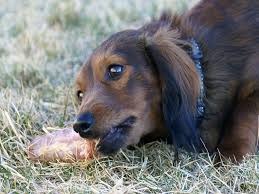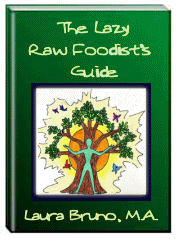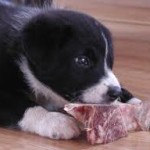 Raw food diets for dogs are available both commercially and prepackaged or can be made at home on an individual basis. Prepackaged raw foods are becoming more and more popular but they are also much more expensive than doing it yourself. There are also different standards for packaging and freezing dog food than there is for human food so you’ll never be very sure how much of an animal carcass is packaged with your raw food.
Raw food diets for dogs are available both commercially and prepackaged or can be made at home on an individual basis. Prepackaged raw foods are becoming more and more popular but they are also much more expensive than doing it yourself. There are also different standards for packaging and freezing dog food than there is for human food so you’ll never be very sure how much of an animal carcass is packaged with your raw food.
In other words, dogs may be being fed a majority of tendons and ligaments as they are in commercially prepared dried foods but if you made it at home you are more likely to use meat which is originally intended for human consumption. This difference in quality can make a difference in their health.
There is some disagreement in the raw food community as to whether or not dogs should be fed fruit and vegetables. While dogs are often thought to be carnivores, they are actually omnivores. It isn’t uncommon to see a dog grazing on grass or nibbling on apples which have fallen from the tree. Wild dogs and wolves will first eat the stomach of their fresh kill which provides for them all of the fruits and vegetables in a partially digested state which their herbivore prey had recently eaten. Once they have devoured the stomach contents they then move on to the meatier aspects of their kill.
 Another question individuals may have are about the bacteria which is often present in raw chicken and beef. While there is bacteria everywhere, dogs have an amazing immune system which is specifically designed to eat raw meat. This includes taking care of the bacteria which is commonly found. Because our digestive system is not quite as robust as our dogs we must protect ourselves and thoroughly wash our hands after cutting up the food and preparing food for our animals.
Another question individuals may have are about the bacteria which is often present in raw chicken and beef. While there is bacteria everywhere, dogs have an amazing immune system which is specifically designed to eat raw meat. This includes taking care of the bacteria which is commonly found. Because our digestive system is not quite as robust as our dogs we must protect ourselves and thoroughly wash our hands after cutting up the food and preparing food for our animals.
Sometimes veterinarians need a bit of convincing when it comes to switching diets from commercially prepared dried food to using raw food at home. Remember that your veterinarian was told very little about a dog diet at the University they attended. They spent more time studying diseases and treatment protocols which were often the result of the foods that these animals ate or the breeding which produce them.
This is your opportunity to help educate your veterinarian about the options that are available for animals. But above all remember that this is your dog and you are feeding your dog. You may take advice from your veterinarian and you may want your veterinarian to be involved in the care of your animal, but ultimately you are responsible. That said, there are plenty of veterinarians who now realize the significantly better alternatives than commercial dog food and are willing to listen to their clients before passing judgment.
One common term used for raw diets in dogs is the BARF diet. This stands for bones and raw food. Before choosing a raw food diet for your dog remember to do your research well and remember that this is not a substitute for medical advice. If you feel that something may be physically wrong with your pet don’t hesitate to seek the advice of a qualified veterinarian who is willing to listen to you and has the best interest of your companion at heart.
| Advertisement | |
 |
|


Leave a Reply